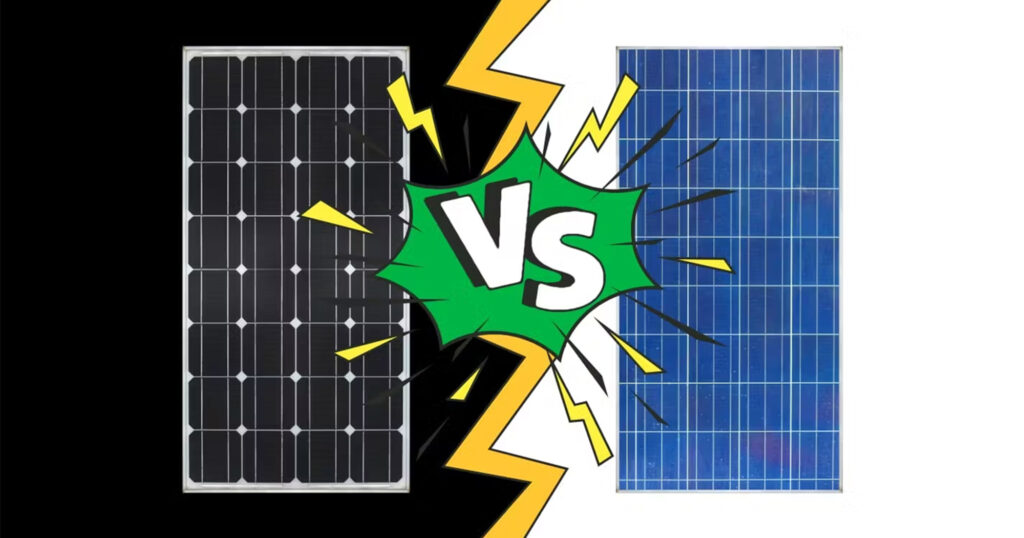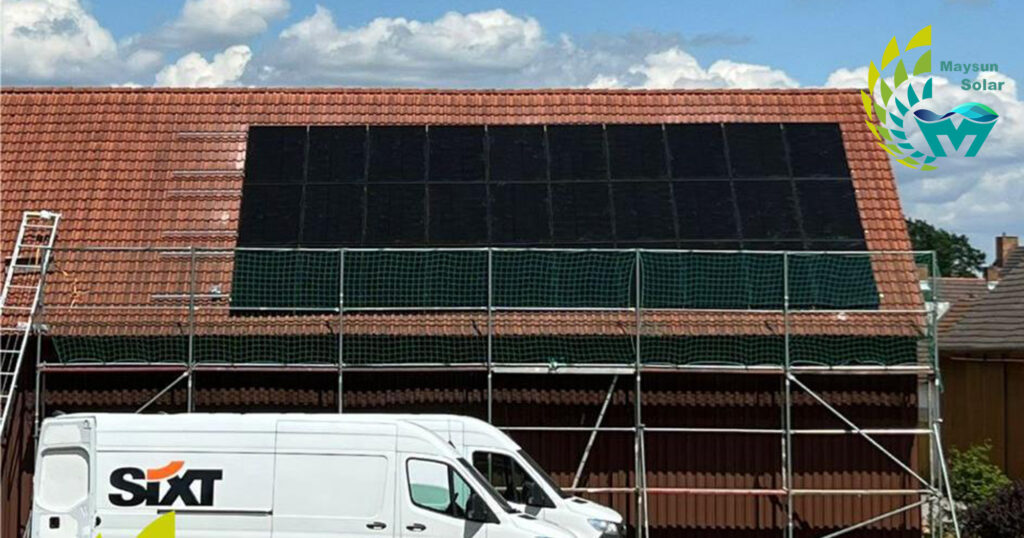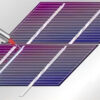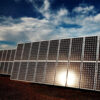Do you know the difference between monocrystalline and polycrystalline solar panels? In this article, we will tell you in detail!
What are the differences between monocrystalline and polycrystalline solar panels?
1. Silicon:
Polycrystalline Silicon: A production process in which silicon crystals are melted and poured into square molds, cooled, and formed into polycrystalline solar cells. Polysilicon produces less silicon waste and requires less energy to form, making it less expensive.
Monocrystalline silicon: High-quality silicon crystals are used to make monocrystalline solar cells. During the production process, the silicon is arranged in a single direction to form one large crystal.
2. color:
The process of producing monocrystalline panels creates many individual crystals, resulting in a speckled, shimmering appearance that appears blue to the human eye.
Due to the way the monocrystalline panels are arranged after production, they appear black to the human eye under light interacting with the monocrystalline cells.
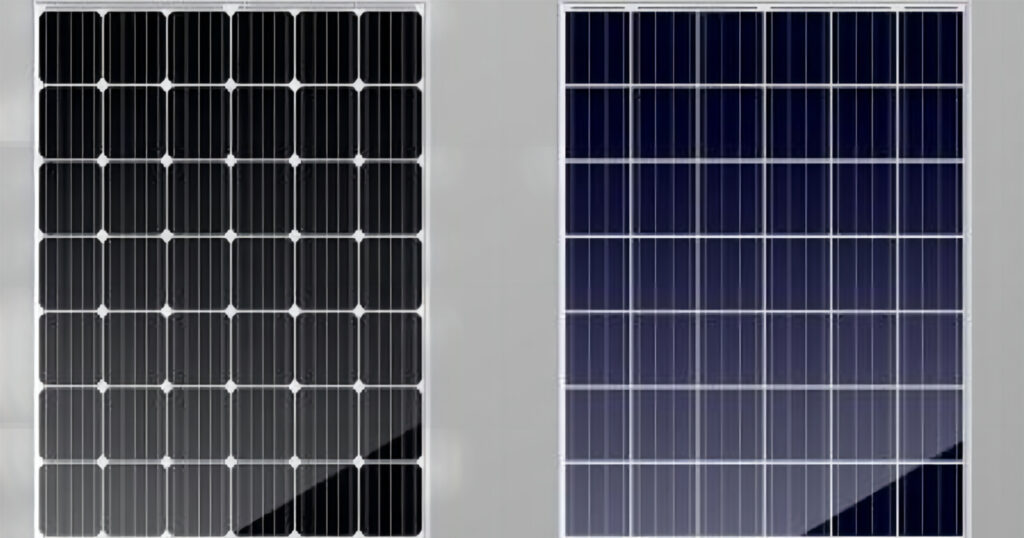
3. Efficiency Rating:
Polycrystalline panels have lower efficiencies, typically in the 13–16% range. Monocrystalline panels are more efficient, usually in the 15-20% range.
Tip: Monocrystalline panels lose some efficiency due to color drop. In addition, monocrystalline panels not only heat up faster, but also trap less light. Both of these factors reduce efficiency. However, the efficiency reduction caused by these factors is only about 0.5%, which is basically negligible.
But overall, monocrystalline panels are still more efficient than polycrystalline solar panels. If you’re located in a cooler region with lower latitudes, you won’t have to think about a drop in efficiency.
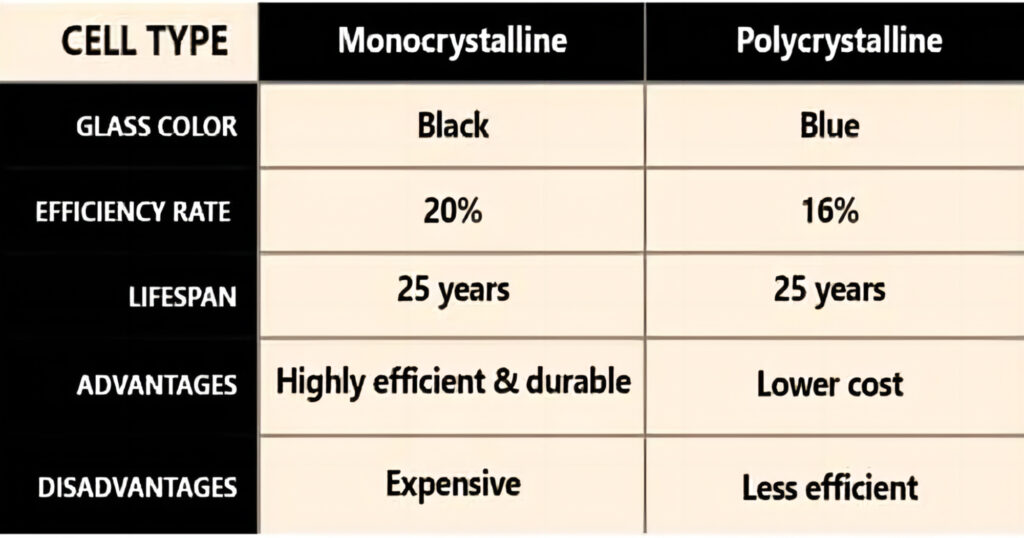
4. Costs
Polycrystalline panels: lower cost due to the simple process of manufacturing polycrystalline solar panels.
Monocrystalline Panels: Monocrystalline solar panels are more costly due to the complexity of the process used to manufacture them.
With the development of technology, the cost of monocrystalline panels is getting lower and lower. A 410W monocrystalline solar panel from Maysun will cost you about €100. It is a good choice for you!
Monocrystalline vs Polycrystalline, which solar panel should I choose?
Now that you understand the basic differences between monocrystalline and polycrystalline solar panels, you may be wondering if monocrystalline panels are a better choice than polycrystalline panels for home solar installations.
Due to their monocrystalline structure, monocrystalline solar panels absorb light and produce electricity more efficiently than polycrystalline solar panels. Since fewer cells are needed to produce the same amount of electricity, monocrystalline panels are usually cheaper in the long run and take up less roof space.
Here are four questions you should answer when determining how many PV panels you need for your home:
- What is your household’s energy consumption history?
- What are the peak daylight hours in your area?
- What is the output of each solar panel you are considering?
- What are your solar goals?
The latest generation of monocrystalline solar panels lasts longer than polycrystalline solar panel models. They also perform better in higher temperatures and low light conditions than blue panels. Even if the amount of power generated slowly deteriorates over time, the panels will still produce enough energy to meet your home’s electricity needs for 25 years (and often longer).
Compared to polycrystalline, monocrystalline panels have become the mainstream of the market, and polycrystalline solar panels also have a variety of shapes to choose from, such as black frames, all-black frames, silver frames, etc., in order to meet the needs of customers in different application scenarios.
Full black monocrystalline panels
An all-black panel is a solar panel based on monocrystalline panels; the backsheet, frame, and appearance are all black. He is a new aesthetic solar cell version. It has become a new favorite in Europe, especially in the Nordic region.
Maysun’s all-black solar panels, on the other hand, use black-glazed ceramic glass with a black anodized aluminum alloy frame, giving the modules a perfect all-black appearance that blends into the elegant European architectural aesthetic. At the same time, the all-black modules absorb heat faster and can melt snow faster in cold areas, thus increasing power generation efficiency.
Maysun works with a number of national suppliers and has assisted many customers with the installation of all-black solar panels.
Maysun Solar has been specializing in the production of high quality photovoltaic modules since 2008. We have a wide range of products, including monocrystalline and double glass solar panels in addition to shingled, with half-cut, MBB and IBC technologies, which provide superior performance and stylish design to blend in perfectly with any building. Maysun Solar has successfully set up offices and warehouses in many countries and has established long-term relationships with excellent installers! For the latest module quotation or any PV related inquiry, please feel free to contact us.

Empowering Factories with Solar Energy A Strategic Tool for Controlling Production Electricity Costs
Commercial and industrial solar is becoming a key solution for factories to reduce electricity costs and hedge against price fluctuations. This article systematically analyzes its deployment models, cost advantages, and sustainable value pathways.

How Businesses Can Offset Carbon Taxes with Solar Power
This article analyzes the latest carbon tax policies and photovoltaic deduction strategies, helping European businesses legally reduce taxes, increase profits through solar investment, and achieve a win-win situation for both economy and environment.

Forecast and Response: Seizing the Next Decade’s Growth Dividend in Europe’s Commercial and Industrial Photovoltaics Market
Maysun Solar analyzes the growth trends of commercial and industrial photovoltaics in Europe over the next ten years, from policies and ESG to technological innovation, helping companies seize the initiative in the energy transition.

How to Calculate Solar System ROI and Optimize Long-Term Returns?
Solar power is becoming a key solution for businesses to reduce costs and improve efficiency. Accurately calculating ROI and optimizing long-term returns are essential to maximizing investment value.

Will Agrivoltaics Affect Crop Growth?
Agrivoltaics combines solar energy and agriculture to reduce up to 700 tons of CO₂ per MW, improve water use, and boost crop growth for sustainable farming.

6.5 Billion Loss Hits Photovoltaics: Reshaping or Elimination?
In 2025, the photovoltaic market may see a turnaround as some companies take early action. A €6.5 billion loss is driving businesses to explore new growth areas like energy storage and hydrogen. Which giants will break through? Industry transformation is accelerating!

